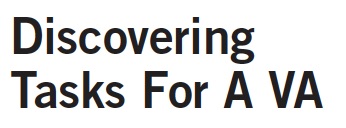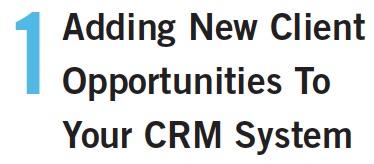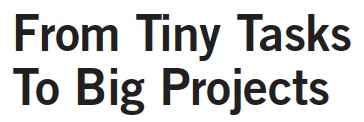Management: Hiring Virtual Assistants

Second in a two-part series
Using virtual assistants (VAs) is one of the best things about running my business. I’m able to work less than four hours a day and be out in the ocean near Santa Cruz paddle boarding with dolphins because I know that VAs are taking care of my clients. My job is to focus on sales. I bring in the clients and I’ve created the systems so that my VA team can take care of them after I send in the POs. The best part is, you can do it, too.
As described in part one in the April issue, VAs are people who work as freelancers within your business to handle everything from small tasks to all the duties and responsibilities you’d hire a full-time employee to manage. They work as an extension of your team, but you control the hours every week depending on workload.

If I were to ask you to list all the specific things you do in a given day, you’d be hard-pressed to remember everything. Before even thinking about hiring a VA, you must first be crystal clear on all the tasks you currently do and be able to prioritize them. Then go through the list and mark the tasks that require your expertise and ones that must be done but not necessarily by you. Think about your strengths and what you enjoy doing and hire a VA based on your weaknesses and the things you don’t like to do. For example, if you are a great salesperson but find yourself wasting time on non-sales activities that don’t require your specific skillset, then VAs might be right for your business. However, if you struggle in sales, then this system isn’t for you. It works best for those who know how to sell but can’t keep up with the demand.
To help you with this step of identifying tasks for a VA, I recommend going to my website (CloneYourselfU.com) and checking out the podcast and free resources. Look for a tool called the “Time Audit,” a worksheet that will help you to identify those time-sucking tasks. Prioritize those you need to do and identify which ones can be outsourced to a VA team.
The goal, by the way, is to build out a VA team, not just hire a single virtual assistant. This point is critical in your success. So many people fail at working with VAs because they hire one VA and overload this person with work. Instead, look at VAs as specialists and hire them for specific skillsets and projects. Remember, you are not committed to give a VA a specific number of hours per day (or even per week/month), so there’s no reason to expect a VA to be a jack of all trades. You want to hire VAs who are masters in specific areas.

Objective tasks are those that are done correctly or incorrectly; there’s no room for variation. On the other hand, subjective tasks leave room for interpretation. It’s for this reason that when starting out with VAs, you should assign them tasks (and projects) that are objective. Think of this step as training wheels for both you and your VAs. Eventually you can add subjective tasks to your VAs’ responsibilities but set yourself up for success from the beginning by only focusing on objective tasks.

Here are three objective tasks you can start out with when hiring your first (or next VA). Again, look at your list of priorities before you hire, know why you are hiring and have a plan in place.

This task is as objective as it comes and as simple as it gets. You may be teaching your VA to do this task and asking yourself, “Why am I having a VA do this when I could just do it myself?” It’s totally natural to have these thoughts. Yes, you can easily load a new client opportunity in a CRM within minutes but remember that any time you get off task, studies have shown it takes up to 15 minutes to get back on task. Adding new clients to my CRM is a disruption in my day (and probably to yours), doesn’t require my skillset and is a tedious task that doesn’t stimulate the side of the brain I use to be effective. When a new or current client / buyer emails me about a new opportunity, I simply forward the email to my VA asking him or her to create a new opportunity in the CRM. It’s that simple. This is the easiest win you can get and it’s a great starting point to learn how to work with VAs.

I have been running “opportunity reports” every Monday in my business since 2015 and it’s been one of my secrets to closing more business than the average distributor. I use commonsku and it’s simple to run an opportunity report that spits out all the potential new projects from the week prior. However, this task doesn’t require my specific skillset.
I’ve created a template for my VA to email my clients to follow up on new opportunities. I have chosen to allow access to my email account so my VA emails from my email address (and name) so it looks like I’m personally sending these follow-up notes to my clients. You can certainly hire a VA who has the skill to do email address redirects and all sort of techy things if you don’t want to allow access to your own email address.
Either way, this is another objective task that is simple to do and builds off the first task. I definitely recommend getting this going as soon as you can.

commonsku also has amazing feedback forms built into every invoice. You can easily click a few buttons to send a feedback form to your client within seconds to capture results on a recent program or campaign. Despite this being extremely easy, the commonsku users I’ve talked with over the years often times overlook using this feature. Why? Because we’re an industry of salespeople. “On to the next sale …” The truth is, a feedback form provides an amazing touchpoint, reinforces your interest in making sure your client had a great experience in working with you and provides an opportunity to gather testimonials.
I teach my VAs to run this report and send out the forms every Friday on projects that were invoiced the week prior. It’s easy for a VA to do this and it’s another vital task that does not require your skillset.
If you do not use a program that makes generating this form easy, you may need to get a bit creative such as using JotForm, Google forms, SurveyMonkey or a similar program and train your VAs how to find your buyers’ contact information and to run and send these reports.
![]()
All three of the VA tasks presented are as easy as it gets, so I’m not surprised if you’re thinking, “Well, that won’t save me that much time. I’ll just do it myself.” The truth is, as an entrepreneur your time is valued at a minimum of $100 per hour. For argument’s sake, let’s say hiring a VA to handle these three tasks would save you two hours a week. That’s $200 of your time and if you had a VA do it at $20 an hour your net savings would be $160, and you’d get two hours of your time back. That’s two hours that you can dedicate to selling and bringing in new business, or two hours that can go towards living your life, working out or other things you’d like to do. The real magic happens when you scale these numbers. Just keep in mind that this example is to get you on that VA bicycle with training wheels. You’ll be flying down mountains and saving 15 hours per week in no time if you stay dedicated to the practice.
![]()
I highly recommend a site called FreeUp.net and here’s why:
- Just like a distributor, FreeUp is big enough to take care of you but small enough that you can reach a contact there by phone should you need support.
- It offers a flexible weekly hourly limit. I recommend setting a weekly hourly limit for each of your VAs so you always know how much you are spending on VAs per week.
- FreeUp takes the recruiting and sifting through hundreds of resumes out of the equation by matching your business with two to three VAs based on your job posting.

Always communicate the way you want VAs to handle your tasks. So many people want to cater to their VAs—don’t fall into that trap. If you like to communicate via email and not by phone, then communicate via email. If you like to track projects on Trello and not on Slack, then use Trello. Teach the VAs to work within your systems.

Start with a tiny task that can (and will) lead to a bigger project. In other words, rather than giving your VA a huge project, break it up into pieces and give the VA a piece at a time. For example, for the three task ideas described here, I could have presented them all as one project but that might be overwhelming. It’s better to break up tasks in a sequential format so each new task builds off of those already learned.
If you follow the steps in this two-part article, you will be successful in working with VAs and free up valuable time you can use to grow your business.
See part one of this article in PPB’s April issue at pubs.ppai.org/ppb-magazine/management-clone-yourself.
–––––––––––––––––––––––––––––––––––––––––––––––––––––––––––
Sam Kabert is principal and creative director at SwagWorx.com in the San Francisco Bay area. He also has a podcast about mindfulness called Soul Seekr and is founder of WhatUp! Silicon Valley, a media network for news in business, sports, networking and innovation. Read more at CloneYourselfu.com and reach him at Sam@SoulSeekrz.com.

